
Top 10 Most Common Grower Mistakes
Easy to learn but hard to master, cannabis cultivation is an art form. A lot of learning comes from trial and error; however, avoiding these errors can make things a lot easier!
Although grasping the fundamentals of cannabis growing is easy, it is more complicated than simply putting a seed in some soil. If you want to get a semi-decent yield, you will have to dedicate some time, effort and care to ensuring your cannabis plant is both happy and healthy. Fortunately, as already mentioned, this is pretty easy, but that doesn’t mean mistakes are not made, especially among novice growers. So here are the ten most common errors that people tend to make when growing cannabis, and how to avoid them. Knowledge is power!
10. WINDOWSILL GROWING
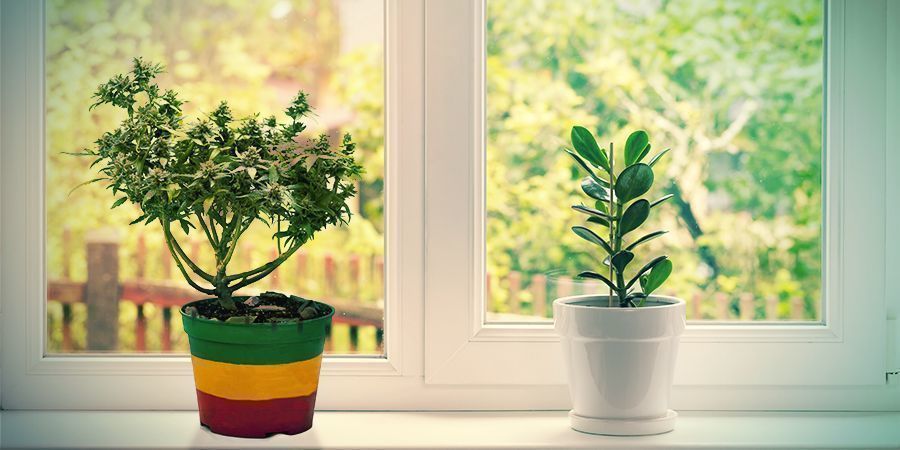
Unless you are happy with a small, bonsai cannabis plant, growing on a windowsill won’t cut it. Without a doubt, the sun is the best source of light you can offer a cannabis plant – even more so than powerful indoor lights – however, cannabis plants need as much all-day light as they possibly can get, and a windowsill is not going to get much at all. If you want to use the power of the sun, grow in a well-lit outdoor location or a greenhouse.
9. DON’T ASSUME ANY OLD SOIL WILL DO
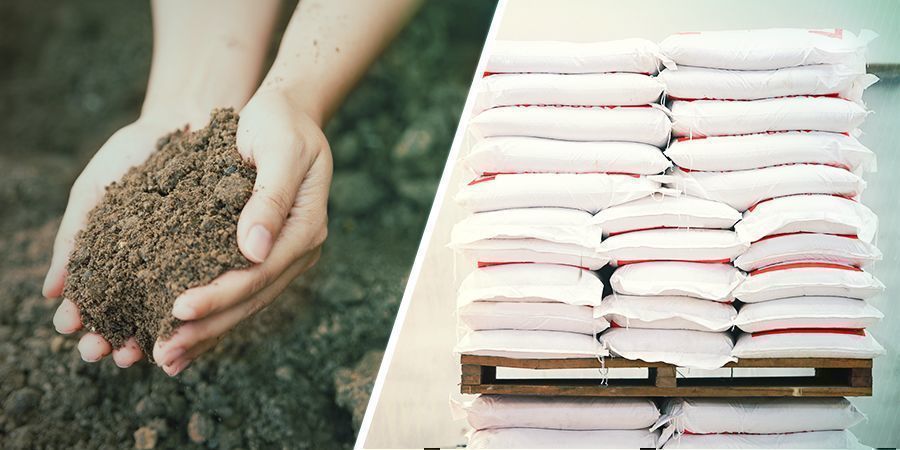
Soil can vary greatly in quality; a common mistake is to assume that simply any soil will do. This applies to both indoor and outdoor growing. Cannabis needs specific nutrients to thrive, and soil taken from the outside, or at an outdoor grow spot, can be lacking. It is always a good idea to do some research and purchase some nutrient rich soil. This can then be used to supplement a grow area or fill pots.
For indoor growers, store bought soil will also be much less likely to contain bugs, pests and diseases. You should never bring something from your garden into an indoor grow (unless you know what you are doing).
8. OVER-WATERING
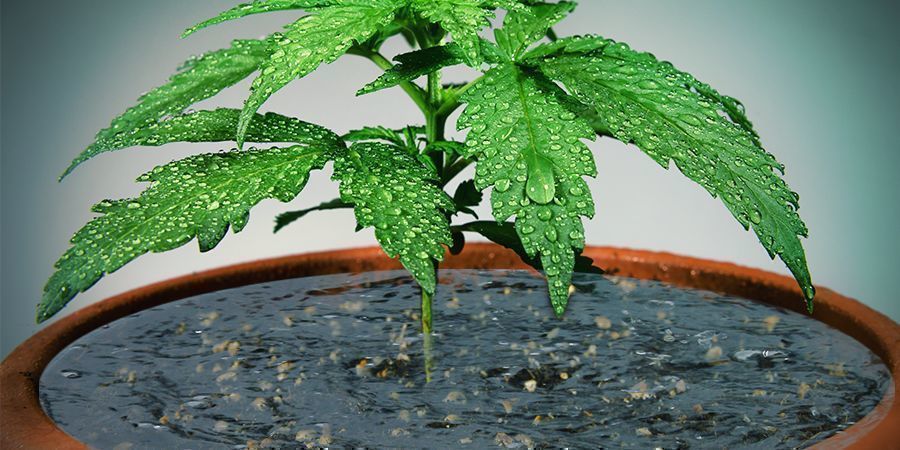
One huge and common error is to over-water cannabis plants. Unless you have a lot of growing experience under your belt, it can be hard to tell precisely when your cannabis needs more water. However, when it comes to water, over-watering is much worse than under-watering, so err on the side of caution. Under-watered cannabis will have leaves that look limp and lifeless; whereas over-watered cannabis plants will have leaves that are firm and look tight and curled under as they struggle to deal with a maximum water load. An under-watered plant can spring back and return to normal in a few hours. However, an over-watered plant will take days to recover.
Over-watered plants can develop chlorosis, as well as root rot. It is worth noting that over-watering is often a result of watering too regularly, not watering with too much water. A large deluge of water is fine, as long as you give your cannabis time to deal with it. Roots need oxygen as well as water, so if you constantly water your soil, and never allow it to dry, problems can occur.
A good basic way to tell if your plants need watering is to stick your finger into the soil up to the first knuckle. If the soil feels bone dry, add some water. It may seem rudimentary, but it is effective. Alternatively, if you are growing in pots, you can pick up a pot when you know the soil is dry. This will give you an idea of dry weight. Next, pick it up when you have watered it. Knowing the weight difference can help assess when there is no water left. It is also possible to buy electronic soil moisture monitors.
7. OVER-FEEDING
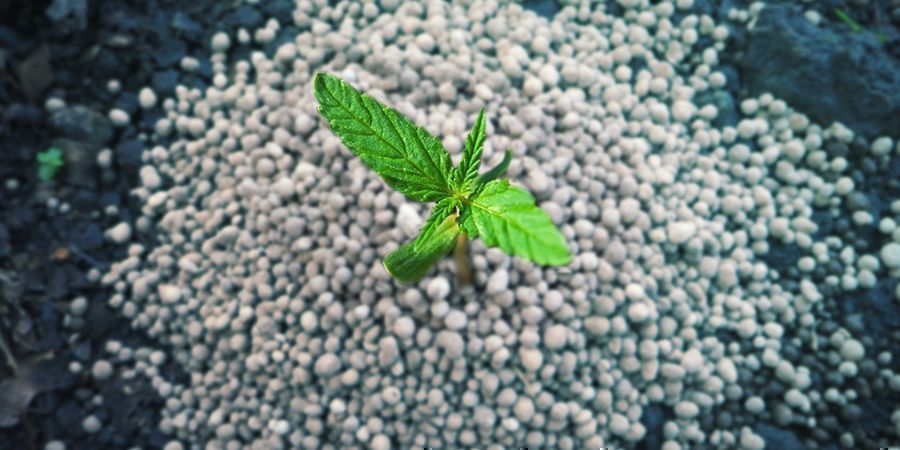
This is another situation where it is best to go under than over; over-feeding cannabis can have devastating effects. Under-feed your cannabis, and it won’t perform that well, over-feed, and you can cause serious and permanent damage to the plant. It is known as nutrient burn and is dreaded by all who know its name. Cannabis has specific needs, and the NPK ratio of your feed is going to be extremely important. Many growers, especially when working with unfamiliar strains, will give food at a half or quarter dose until they are confident with how it affects the plants. With each passing feed, the level of food can be optimised and tailored to the grow.
6. ROOT BIND
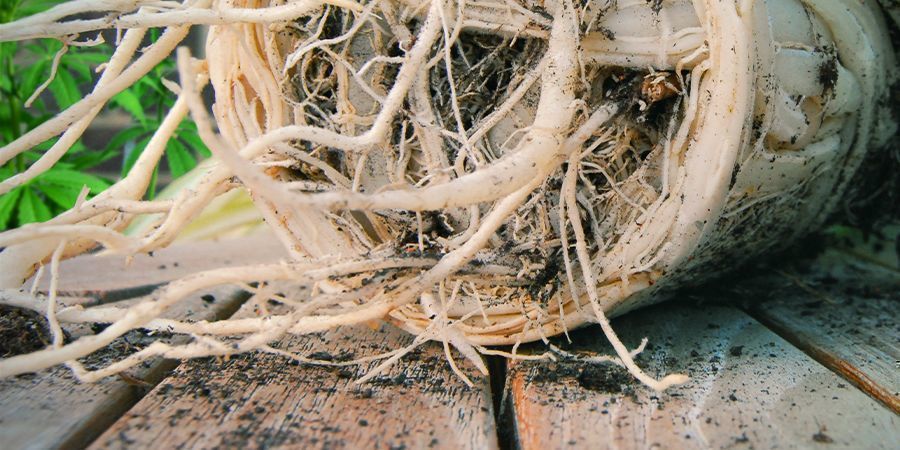
How well a cannabis plant grows will be directly affected by its foundation – the roots. Roots need all the room they can get to spread out a thrive. A large healthy root base equals a large healthy plant. If roots don’t have the room they need to expand, like when cannabis is left in a pot that is too small, they become root bound. This is where the roots reach a barrier they cannot pass and start growing in on themselves, forming a dense ball of roots. Even if re-potted in this situation, roots will continue to grow in on themselves, severely limiting their effectiveness at absorbing nutrients.
Fortunately, root bind is easy to prevent. Simply ensure you cannabis has enough room to grow in. If you start off in a small pot, ensure you repot in a bigger one before the plant gets too big.
5. TELLING PEOPLE
One of the quickest ways of getting your cannabis stolen or confiscated is by telling people about it. Keeping your mouth shut, no matter how proud you are, is one of the best security measures you can take. After all, growing a plant or two for yourself involves no one else, so why should they know? Keep your grow to yourself.
4. OVER-PRUNING
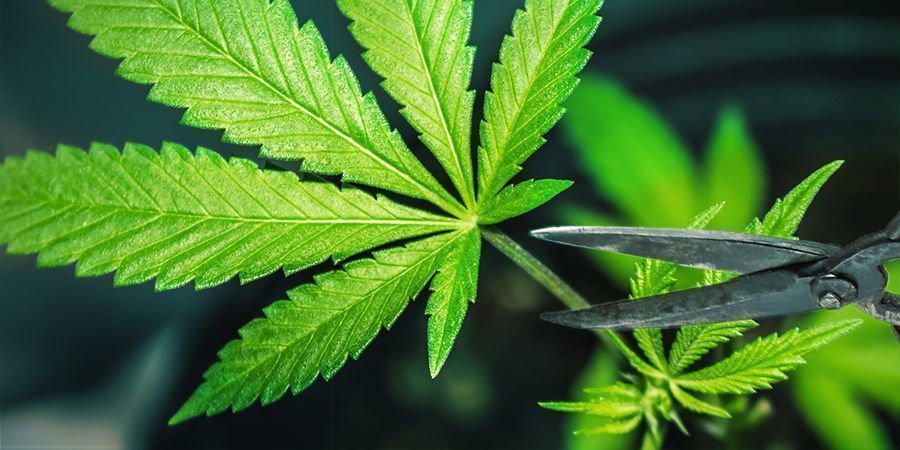
Pruning is an intermediate to advanced technique that involves redirecting your cannabis plant’s energy into large healthy growth by cutting away unnecessary foliage. However, cannabis is prone to shock, so if you prune away too much at once, or don’t leave enough leaves for the plant to actually produce energy with, it is going to die. Once again, it is better to under do it than overdo it. So take things easy with the shears, especially if you are new to pruning.
3. IMPATIENCE WITH GERMINATING SEEDS
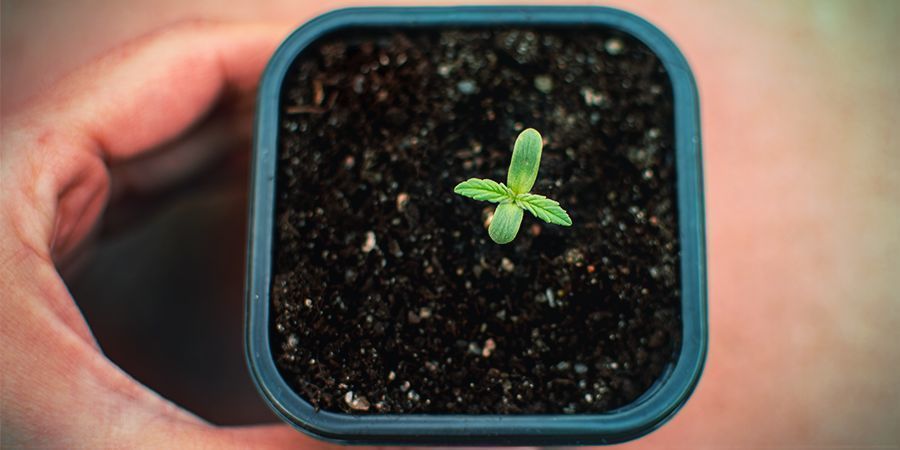
The germination phase of the cannabis lifecycle is the most vulnerable. By touching and uncovering seeds to see how they are doing, you can expose them to potential damage. Seeds can often take up to ten days to germinate, which for the overly enthusiastic grower, can be a trying time. Resist the temptation to meddle with your seeds, and let them do their thing.
2. PANICKING
One of the biggest mistakes ever is to panic when you notice something wrong. This makes the situation worse by ten-fold. If and when you notice something wrong, keep your cool and do some research. Nine times out of ten, if you spot the problem early enough, it can be resolved in an easy and concise manner. You may get a slightly smaller yield than if the problem never occurred, but it is not the end of the world. It is all part of the learning experience, and you will know for next time.
1. BAD GENETICS
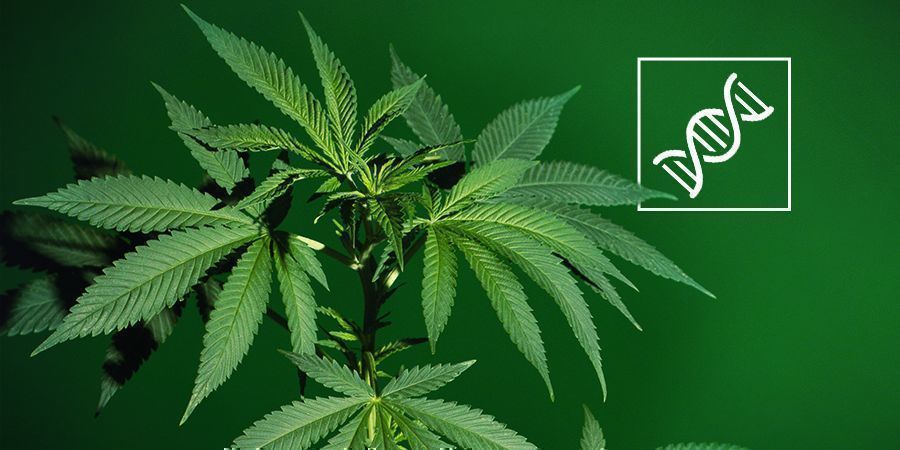
The worst thing you can do when growing cannabis is use bad genetics. The genetic quality of your cannabis seeds will determine its potential in every way. If you use seeds with bad genetics, it doesn’t matter how great a grower you are, or how much care you offer your plants; they will only be able to go so far before hitting a barrier of quality. Using cannabis seeds with top-shelf genetics unshackles any kind of limit in potential, and allows you to grow the best your skill will allow for.
It is a particularly bad mistake for novices, as more often than not when they hit the ceiling of their seeds’ potential, they think it is their skill that is holding them back when in fact it is the quality of the seeds. Using high-quality seeds will give you all the room you need to learn with, offering a great experience. After all, growing cannabis is meant to be fun, so don’t let anything hold you back!
-
 4 min
May 19, 2022
Top 10 High Yielding Feminized Cannabis Strains
Just by picking the right strain, yields can be improved dramatically. All the research, preparation, and cannabis care cannot outweigh the importance of choosing strains with proven genetics....
4 min
May 19, 2022
Top 10 High Yielding Feminized Cannabis Strains
Just by picking the right strain, yields can be improved dramatically. All the research, preparation, and cannabis care cannot outweigh the importance of choosing strains with proven genetics....
-
 6 min
April 1, 2021
How To Make The Best Soil Mix For Growing Cannabis
Cannabis plants depend on soil rich in nutrients and beneficial microbes. Discover how to make the perfect soil mix below. Your plants will thank you!
6 min
April 1, 2021
How To Make The Best Soil Mix For Growing Cannabis
Cannabis plants depend on soil rich in nutrients and beneficial microbes. Discover how to make the perfect soil mix below. Your plants will thank you!
-
 5 min
September 6, 2019
Top 10 Best Cannabis Strains
Ever wondered what our favourite cannabis strains are here at Zamnesia? Wonder no longer, we have put together a list of our top 10.
5 min
September 6, 2019
Top 10 Best Cannabis Strains
Ever wondered what our favourite cannabis strains are here at Zamnesia? Wonder no longer, we have put together a list of our top 10.
-
 3 min
November 29, 2018
Simple Tips To Grow Better Weed
Every grower wants to get the most out of their cannabis, so here are a few basic tips and consideration that will help you develop technique and make your way to becoming a veteran.
3 min
November 29, 2018
Simple Tips To Grow Better Weed
Every grower wants to get the most out of their cannabis, so here are a few basic tips and consideration that will help you develop technique and make your way to becoming a veteran.
-
 4 min
August 14, 2018
How Much Water Do Cannabis Plants Need?
Just as with humans, cannabis plants need water to survive and thrive. But too much - or too little - and they die. Finding the right balance is crucial for an abundant harvest.
4 min
August 14, 2018
How Much Water Do Cannabis Plants Need?
Just as with humans, cannabis plants need water to survive and thrive. But too much - or too little - and they die. Finding the right balance is crucial for an abundant harvest.
-
 2 min
December 18, 2015
How To Prune Cannabis Plants
Pruning your cannabis can be a great way to push it further than it would normally go. Not only does this improve your skill as a grower, but results in some much larger yields of that sweet green...
2 min
December 18, 2015
How To Prune Cannabis Plants
Pruning your cannabis can be a great way to push it further than it would normally go. Not only does this improve your skill as a grower, but results in some much larger yields of that sweet green...
-
 2 min
November 30, 2015
Growing Indoors Vs. Outdoors: The Pros And Cons
There are some significant differences between growing cannabis indoors and outdoors. Knowing them can help you decide which is best for you.
2 min
November 30, 2015
Growing Indoors Vs. Outdoors: The Pros And Cons
There are some significant differences between growing cannabis indoors and outdoors. Knowing them can help you decide which is best for you.











 United States
United States








